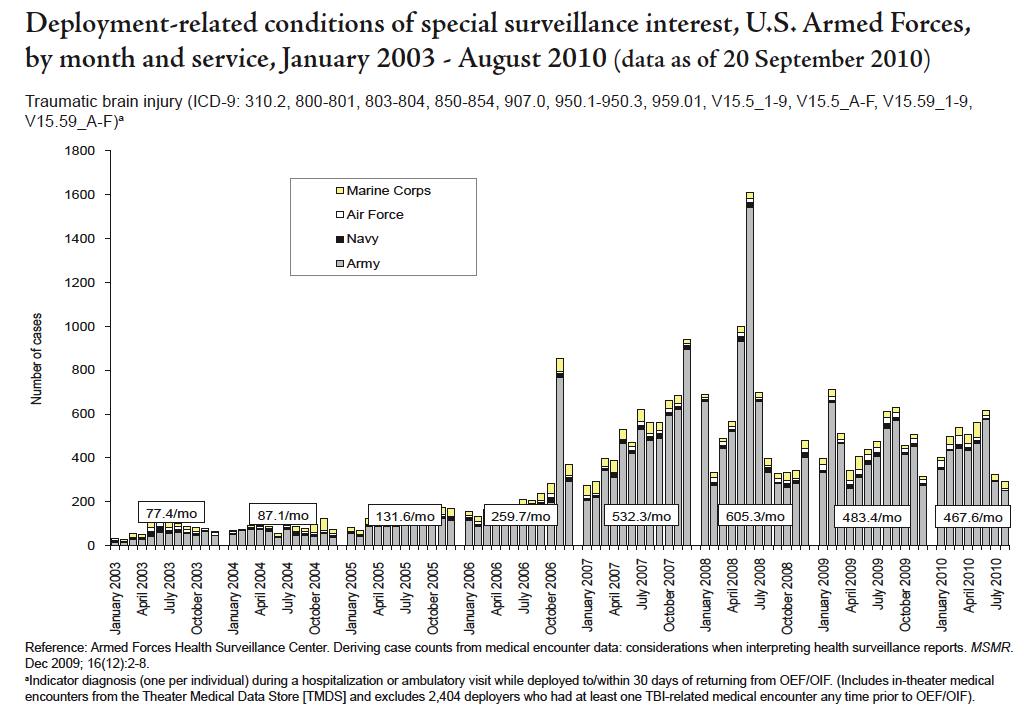The chart below shows how traumatic brain injuries — which usually happen when troops’ brains are violently shaken inside their skulls due to roadside bombs — have soared among U.S. troops in Afghanistan and Iraq. They’ve jumped from less than 80 a month in 2003 to more than 450 a month this year. That’s more than 15 U.S. troops a day whose grey matter is battered, torn and otherwise shredded. TBI — which Army doctors call the “signature wound” of the wars — is difficult to treat and often goes hand-in-hand with post-traumatic stress disorder.
The chart (bigger version here) is from the Pentagon’s latest Monthly Medical Surveillance Report, and it represents pretty grim news. It’s graphic — pun intended — evidence that war is dynamic. After all, it wasn’t until late 2006 that the bad guys started cranking out IEDs to kill and maim U.S. and allied troops once they realized such weapons were cheap and effective. The monthly toll peaked at about 1,600 in mid-2008, during the U.S. troop “surge” into Iraq, and has overwhelmed the Army’s mental-health corps.
The U.S. reacted to the IED bombardment by sending $25 billion worth of Mine-Resistant Ambush-Protected vehicles to both Afghanistan and Iraq. The good news is that deaths-by-IEDs have gone down. The bad news is that TBI remains nearly 300 percent higher over the past four years, than it was in the four years before that, despite all that additional armor. These are mostly 20-year-old brains being wounded, meaning some will require a half-century or more of care.



